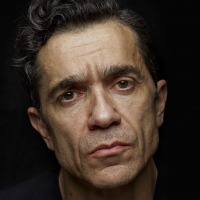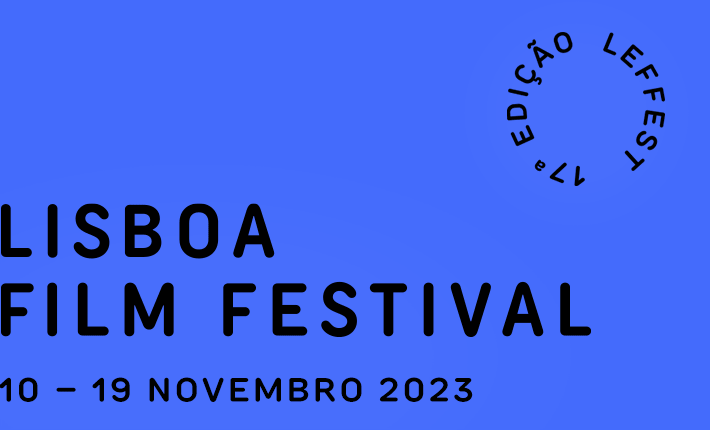Archives
Edition 2021
Films
Program #2 of To Reverse One's Eyes, a retrospective of
Romeo Castellucci's work, curated for the festival by Piersandra Di Matteo, presented by Piersandra Di Matteo
Romeo Castellucci’ s artist trajectories explored in the Nineties – brought together as the Epopea della Polvere / Epic of Dust – were an occasion to radically rethink the tradition of Western Drama. Denying any legitimacy to a theatre conceived as the illustration of a text, he engaged in a rigorous immersion into the great classics of Western theatre from Aeschylus to Shakespeare, discovering a theatre of the body.
In Amleto, la veemente esteriorità della morte di un mollusco (1991), we meet a boy with the symptomology of an autistic child. Closed up inside a camp made of electric circuits and stuffed animals that have become simulacra of his family, he vacillates between being and non-being. Orestea (una commedia organica?) (1995) – restaged 20 years after the original – derails in the manner of Lewis Carroll’s Alice and Humpty-Dumpty translated by Antonin Artaud during the psychiatric internment in Rodez. Aeschylus’ language passes into the body, becoming an organic substance. Giulio Cesare (1997) delves into the Empire of Rhetoric and the morphology of the monument, looking towards the origins of Western culture and its forms of politics, framing a “drama of the voice” between embodiment, simulation and dissimulation. Genesi: From the Museum of Sleep (1999) comes to grips with the first book of the Bible. Structured into three acts – At the beginning, Auschwitz, Abel and Cain –, Castellucci contemplates the creation through its most extreme opposite: Auschwitz. Bodies, mechanisms and figures trace out an itinerary in which each creature is condemned to dream itself and be dreamed, while evoking a form of suffering that reveals forms of compassion.
Romeo Castellucci's work, curated for the festival by Piersandra Di Matteo, presented by Piersandra Di Matteo
Romeo Castellucci’ s artist trajectories explored in the Nineties – brought together as the Epopea della Polvere / Epic of Dust – were an occasion to radically rethink the tradition of Western Drama. Denying any legitimacy to a theatre conceived as the illustration of a text, he engaged in a rigorous immersion into the great classics of Western theatre from Aeschylus to Shakespeare, discovering a theatre of the body.
In Amleto, la veemente esteriorità della morte di un mollusco (1991), we meet a boy with the symptomology of an autistic child. Closed up inside a camp made of electric circuits and stuffed animals that have become simulacra of his family, he vacillates between being and non-being. Orestea (una commedia organica?) (1995) – restaged 20 years after the original – derails in the manner of Lewis Carroll’s Alice and Humpty-Dumpty translated by Antonin Artaud during the psychiatric internment in Rodez. Aeschylus’ language passes into the body, becoming an organic substance. Giulio Cesare (1997) delves into the Empire of Rhetoric and the morphology of the monument, looking towards the origins of Western culture and its forms of politics, framing a “drama of the voice” between embodiment, simulation and dissimulation. Genesi: From the Museum of Sleep (1999) comes to grips with the first book of the Bible. Structured into three acts – At the beginning, Auschwitz, Abel and Cain –, Castellucci contemplates the creation through its most extreme opposite: Auschwitz. Bodies, mechanisms and figures trace out an itinerary in which each creature is condemned to dream itself and be dreamed, while evoking a form of suffering that reveals forms of compassion.
-
Original Title:
Epopea della Polvere -
Country:
Italy -
Year:
1999 - 100'
Director
Romeo Castellucci

Born in Cesena (Italy) in 1960, Romeo Castellucci is a director and visual artist known around the world for creating a theater based on the concept of the “totality of the arts”, that seeks an integral perception and a “kinesthetic” experience. With a degree in painting and scenography from the Academy of Fine Arts in Bologna, Castellucci has worked as a stage director since the 1980s, having founded, in 1981, with Claudia Castellucci and Chiara Guigi, the experimental theater company Socìetas Raffaello Sanzio, which has received numerous international awards and released several books, becoming considered the most prominent Italian company in the world. The dramatic structure of his productions is not tied to the primacy of literature, based above all on his understanding of theater as a complex and visionary plastic art. The director has used his own experience in theater to produce a set of theoretical essays on stage direction.



